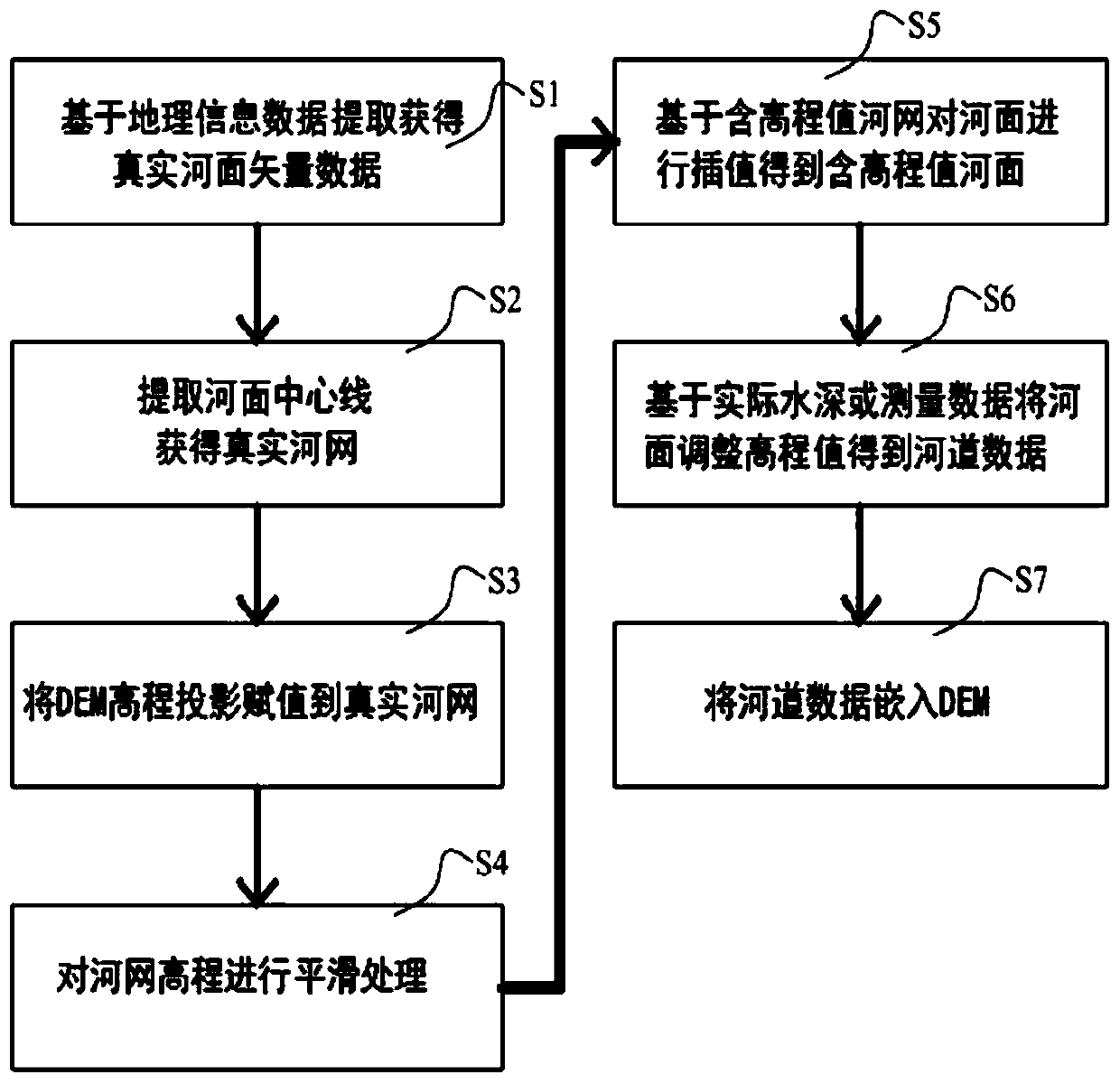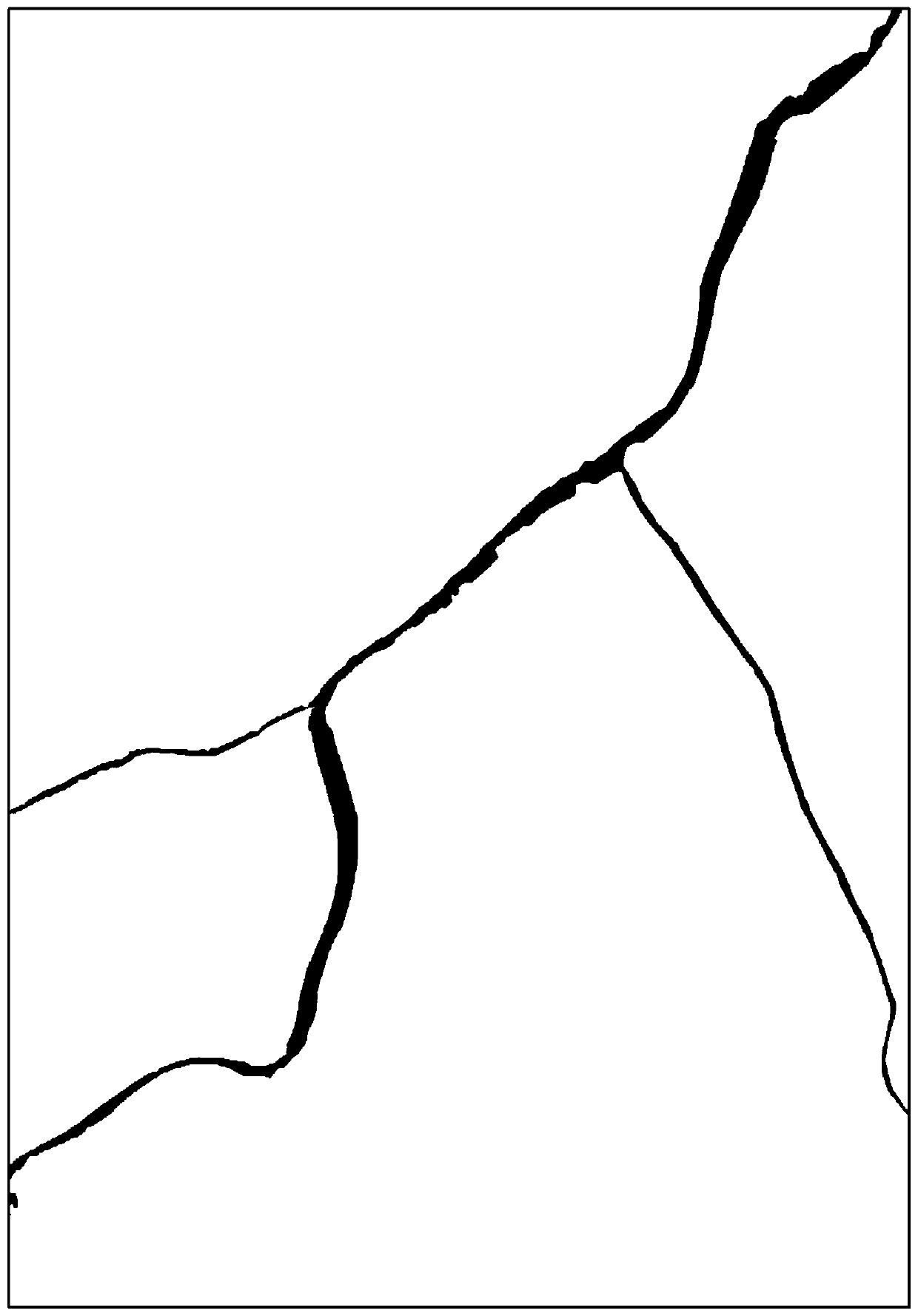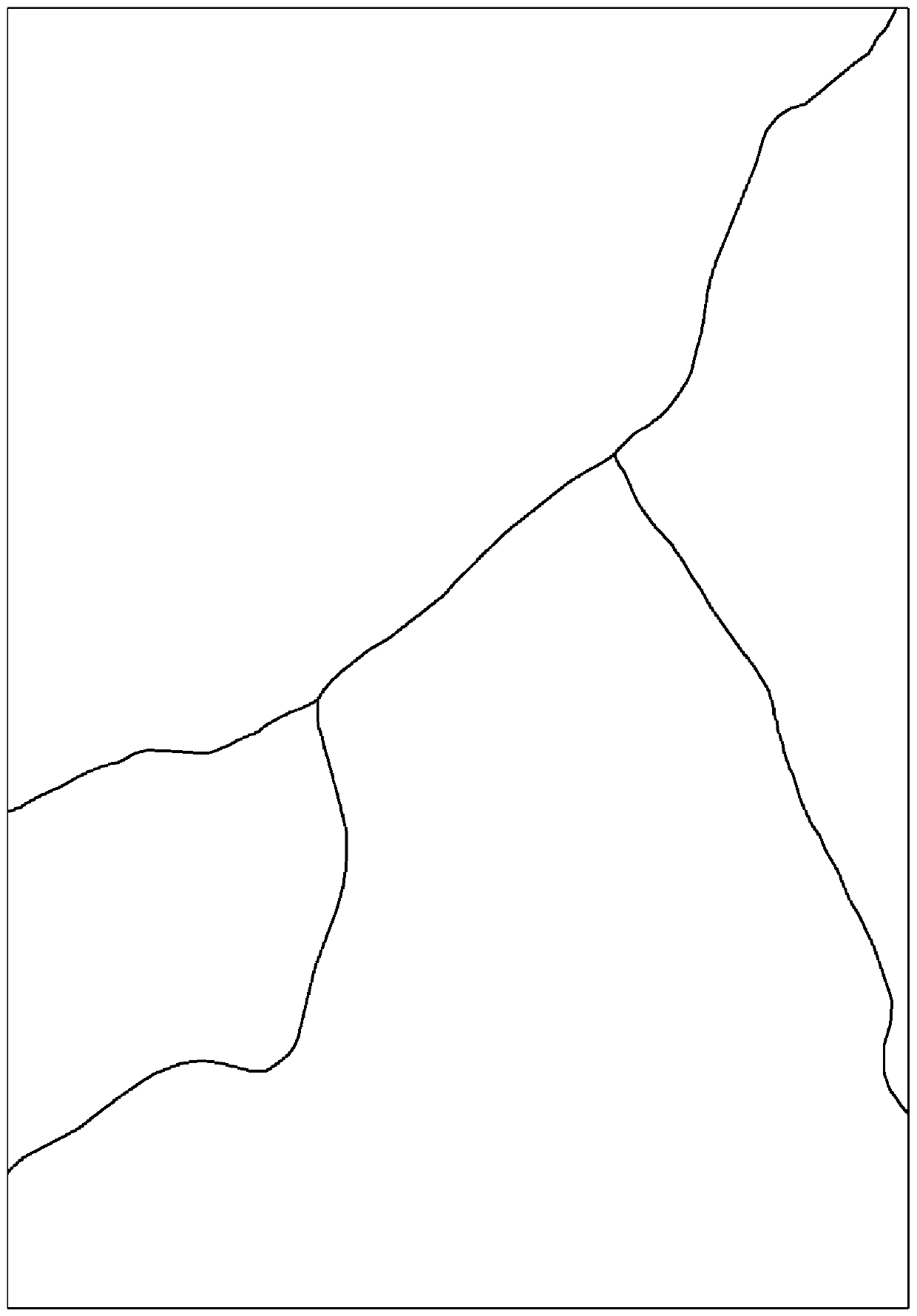Method for constructing river channel data based on digital elevation model
A digital elevation model and elevation data technology, which is applied in the fields of electrical digital data processing, image data processing, special data processing applications, etc., can solve the problems of difficulty in obtaining DEM data, low popularization, and poor conditions, and achieves improvement that cannot be carried out. The situation of two-dimensional flooding simulation, the effect of easy availability of existing data and simple method
- Summary
- Abstract
- Description
- Claims
- Application Information
AI Technical Summary
Problems solved by technology
Method used
Image
Examples
Embodiment Construction
[0053] The present invention will be further elaborated below by describing a preferred specific embodiment in detail in conjunction with the accompanying drawings.
[0054] Such as figure 1 As shown, it is an execution flowchart of the method for constructing river channel data based on a digital elevation model of the present invention. In this embodiment, the Wende River Basin in Jilin Province is taken as an example to construct the DEM river channel data of the watershed. The original DEM data of this watershed adopts the 90m resolution SRTM (ShuttleRadar Topography Mision, that is, the Space Shuttle Radar Topography Mission) DEM data jointly provided by the United States Space Deployment (NASA) and the National Bureau of Mapping of the Ministry of National Defense (NIMA). The water depth of the Wende River section in Yongji County is 6m, and the channel data of this section are needed for flood flooding simulation. The specific construction method is as follows:
[0055...
PUM
 Login to View More
Login to View More Abstract
Description
Claims
Application Information
 Login to View More
Login to View More - R&D
- Intellectual Property
- Life Sciences
- Materials
- Tech Scout
- Unparalleled Data Quality
- Higher Quality Content
- 60% Fewer Hallucinations
Browse by: Latest US Patents, China's latest patents, Technical Efficacy Thesaurus, Application Domain, Technology Topic, Popular Technical Reports.
© 2025 PatSnap. All rights reserved.Legal|Privacy policy|Modern Slavery Act Transparency Statement|Sitemap|About US| Contact US: help@patsnap.com



